Energy-efficient, deep-learning processors are what’s needed to make smart phones, wearables, and other consumer electronics smarter.


Energy-efficient, deep-learning processors are what’s needed to make smart phones, wearables, and other consumer electronics smarter.

A story and a question for Valentines — could you fall in love with a robot? Me? the answer is no as I get bored easily and like imagnative conversations; I would get bored after a while of a robot.
Many of us say we have relationships with our dogs, and some—still—with our childhood teddy-bear. Some might claim to have a relationship with their car. And others, although they might not admit it publicly, feel they have some sort of relationship with their sex-doll.
Are all these people deluded? Can we really have relationships with non-human beings?
If so, what about robots? Computerised chat-bots, such as the “personal assistants” Siri (from Apple’s iPhone) and Cortana (from Microsoft), already exist which can remember many of their owner’s likes and dislikes, and respond helpfully to their questions, recognising their individual voice and accent.
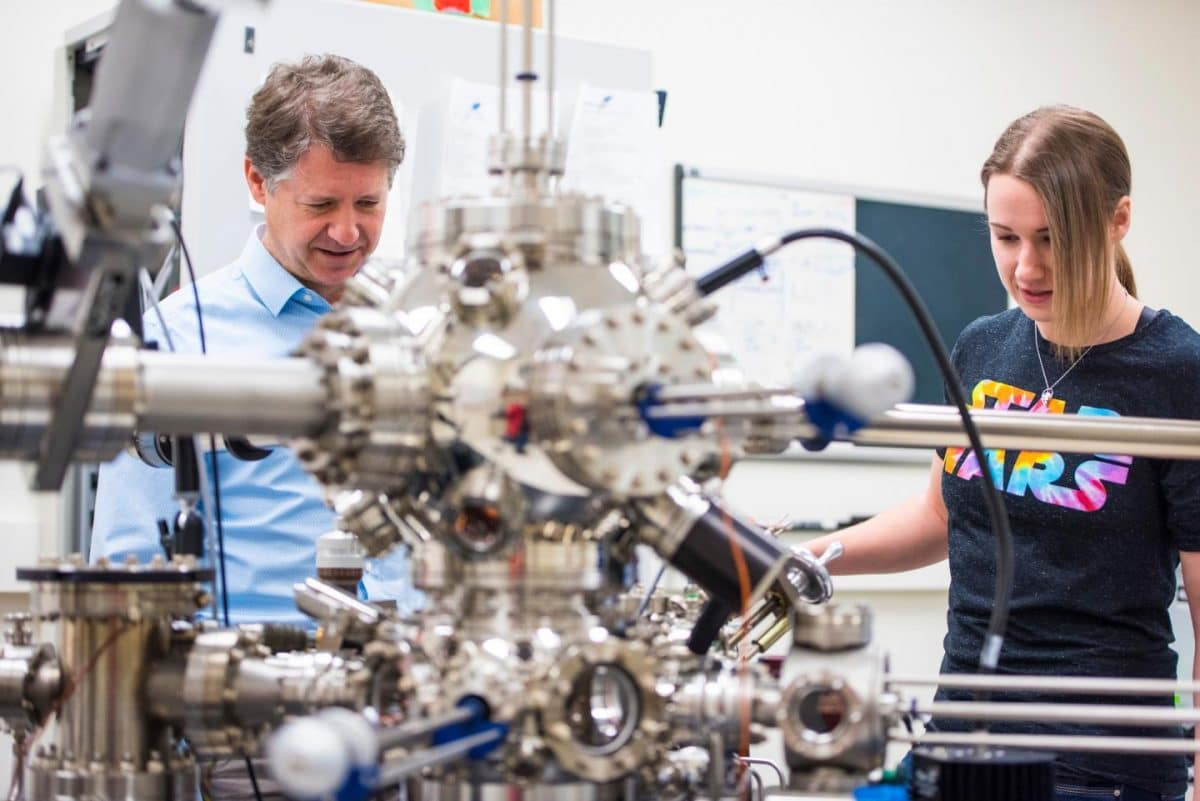
Quest to settle riddle over Einstein’s dark energy theory may soon be over
Saving energy is just as important as finding new and sustainable sources. By reducing the demand we reduce the energy and storage needed in the first place.
This is a first step in creating the tools needed to design and engineer low energy electronics. Cell Phones that last for weeks on a single charge and computers and servers using micro watts. However you will still need a lot of energy to drive screens and interface devices.

Posthumanists and perhaps especially transhumanists tend to downplay the value conflicts that are likely to emerge in the wake of a rapidly changing technoscientific landscape. What follows are six questions and scenarios that are designed to focus thinking by drawing together several tendencies that are not normally related to each other but which nevertheless provide the basis for future value conflicts.
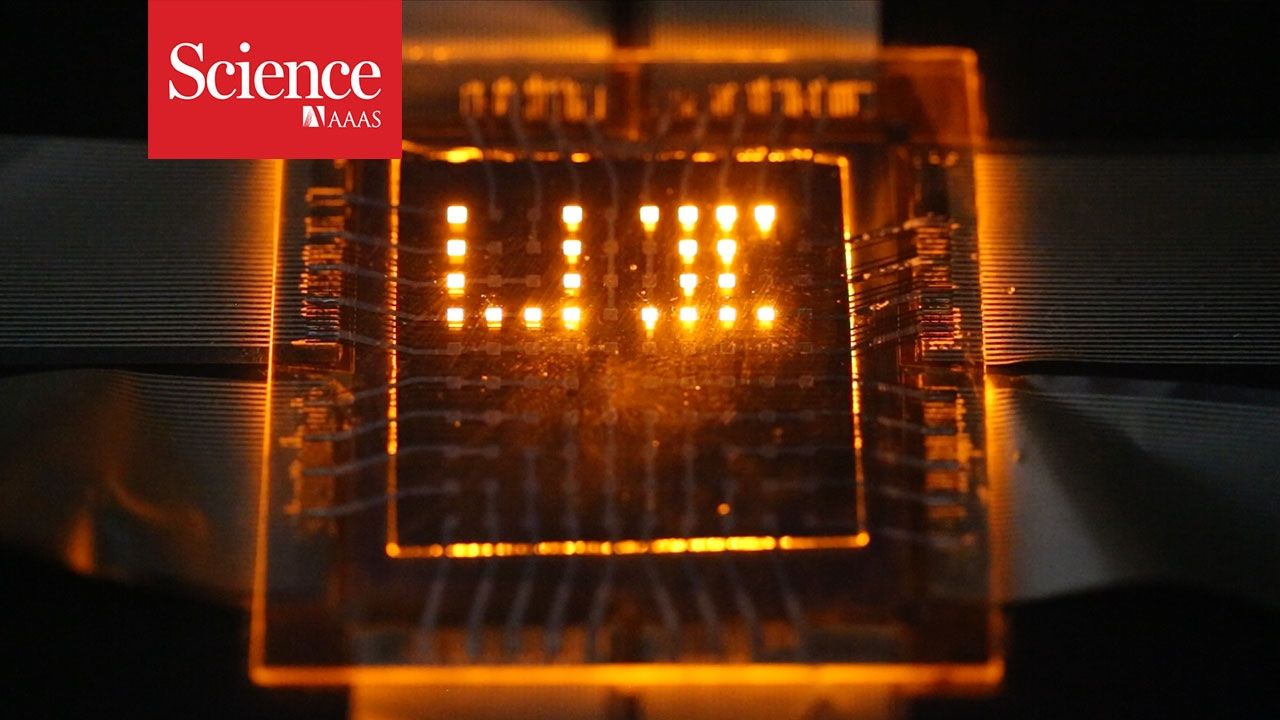
I don’t know how to say this; however, Apple has already shared their own experiment Li-Fi over a year ago; now this from IEEE.
Now an advance by a team of researchers from the University of Illinois at Urbana–Champaign, the Electronics and Telecommunications Research Institute in South Korea and Dow Chemical may turn the display market on its head by eliminating the need for backlights in LCD devices. They have produced a LED pixel out of nanorods capable of both emitting and detecting light.
In the video below, you can get a further description of how the nanorods manage to both detect and emit light as well as some pretty attractive future applications, like mobile phones that can “see” without the need of a camera lens or communicate with each other using Light Fidelity (Li-Fi) technology.
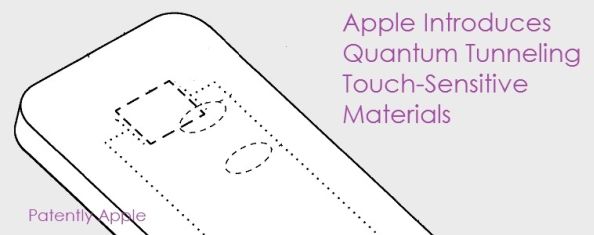
Well, I asked about Apple’s own investment in QC; we now have our answer.
Today the US Patent & Trademark Office published a patent application from Apple that reveals a new breakthrough material described as deformable touch-sensitive quantum tunneling material. It could be used in a smart iPhone case allowing for touch zones on the back of the case to control your iPhone. More importantly, it could be used as a material for making the iPhone itself. The use of this material would virtually eliminate bulky physical buttons forever making the iPhone near waterproof perfect and slick to the touch. The material could extend to a new smart Apple Watch band. Smart Apple Watch Bands have been on Apple’s mind for some time now as we’ve covered a number of interesting patent ideas like smart links, chameleonic bands with 3D touch and cooling and, easy recharging with a MacBook. Yet the use of quantum tunneling material in a band would allow for touch controls without seeing any buttons.
This could also apply to accessories like future EarPods to eliminate the bulky remote and much more. This breakthrough material will eventually provide Jony Ive’s industrial design team with new ways to streamline designs and finally eliminate physical buttons of any kind while allowing device designs to be even thinner.
There’s been more exciting patents revealed today than I’ve seen in some time. Seeing a new wave of Apple innovations is exactly what the doctor ordered to fire up fans. While it may take some time for this to come to market, the promise of cool next generation designs is guaranteed.

Many have asked me what does this DARPA announcement on their project (RadioBio) mean. Well, imagine a world in the next 10 to 15 years where you no longer need any devices (no smartphone, no AR contacts, no smartwatch, no wearables, no external BMIs or invasive implants, etc.) of any kind as Quantum Bio technology uses (in DARPA’s case) connected cell technology to connect people to people and information online (private and publically available. This approach is the least invasive method of turning cells into connected technology.
Military will mean no more lugging of devices and certain types of equipment around on the battlefield plus lower risk of stolen intelligence as no device or equipment left behind or stolen.
What does it mean to consumers? Means no more losing phones and other devices as well as broken down equipment be replaced every 2years and no more insurance and extra-warranty payments for devices; and no more devices stolen with your information on it. And, it means my doctors and body (AI and non-AI methods) can monitor my health and activate pain relief, etc. through biosystem treatments such as pain can be suppressed via the readings or before the pain is felt. It also empowers the immune system to proactively prevent diseases as the biosystem technology will monitor and treat as needed.
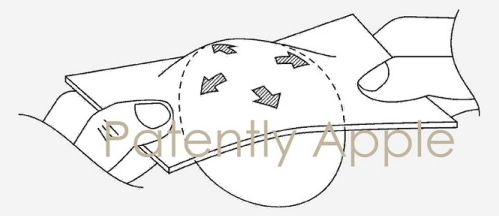
Patently Apple’s other blog called Patently Mobile has covered the advances of flexible displays from Samsung for years. You could check out some of the major ones here: (one, two, three and four. The most interesting ones relate to a possible scrollable smart device. Today the US Patent & Trademark Office published a patent application from Apple that reveals their work on flexible displays and electronics that will extend to specialty applications. Beyond applying their revealed technology to known devices such as a smartphone or tablet, Apple see’s the technology being widely adopted into smart clothing, smart windows, applications in vehicles, furniture and more. One of the inventors on the patent previously worked for a company where they made flexible medical devices, skin-mounted epidermal electronics and even next gen flexible processors. So this is a serious invention that is likely to work through the system over time and eventually to market. It’s not just pie in the sky thinking.
Traditional displays and touch sensors mounted in a device may be subject to stress-induced failures. As devices with flexible displays are being considered for the future, Apple has to invent new and improved input-output methodologies to accommodate such displays.
Apple notes that their invention relates to a flexible input-output device such as a display or a display with integrated sensors and haptic output may be formed from an elastomeric substrate layer.
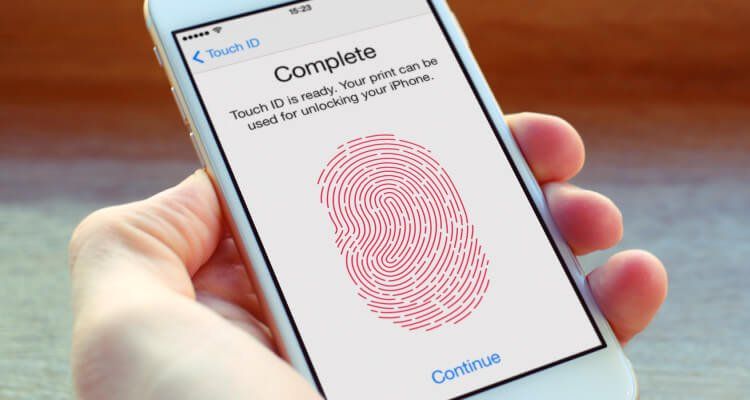
Wow — hope that folks at Apple, Samsung, Motorola, etc. see this.
In response to an incident that lacked any relation to the last fingerprint-related news, a Minnesota court ruled against a recent Fifth Amendment appeal regarding device passwords. The Minnesota Court of Appeals ruled that ordering an individual to unlock a device with a fingerprint “is no more testimonial than furnishing a blood sample, providing handwriting or voice exemplars, standing in a lineup, or wearing particular clothing.”
The case in question involved Matthew Vaughn Diamond, a man Carver County District Court found guilty in 2015 of burglary and theft, among other crimes. Other news outlets cite arrest records from far before 2015, but the records showed no relevance to the January 2017 ruling. The Carver County District Court fought Diamond over his phone’s contents—he locked the phone with a fingerprint and refused to unlock the phone for the court. He argued, initially, that forcing his fingerprint violated both his Fourth and Fifth Amendment rights. However, the Minnesota Court of Appeals heard only the Fifth Amendment appeal.
According to the Fifth Amendment, compelled self-incrimination is a violation of human rights. “The Supreme Court has held that ‘a witness may have a reasonable fear of prosecution and yet be innocent of any wrongdoing. The privilege serves to protect the innocent who otherwise might be ensnared by ambiguous circumstances’.” Additionally, the “right to remain silent” from the Miranda Rights, read to an arrestee at the time of arrest, granted a suspect the ability to refuse questions. Additionally, at the minimum, gave suspects the right to avoid answering questions legally and without fear of immediate repercussions.